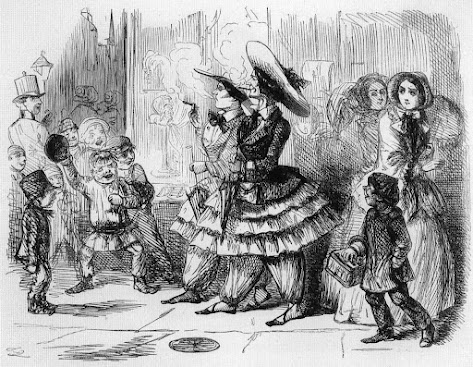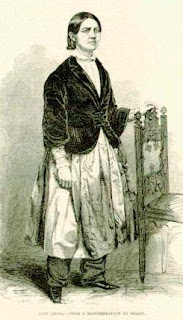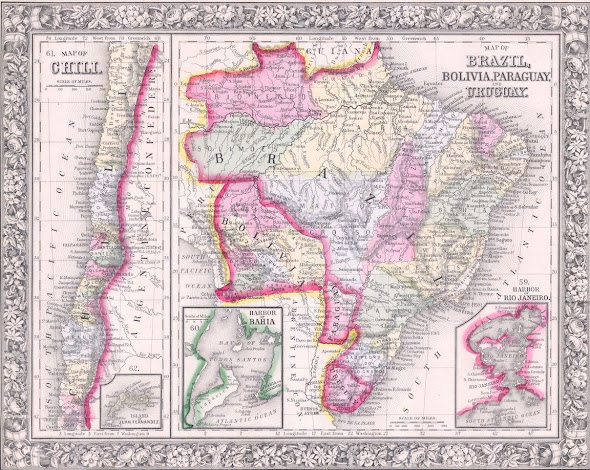Another Girl in Pants
While the West was being won, slavery was an issue and Queen Victoria sat on her throne, there were a few ultra modern things going on, hilariously phrased by modern standards, but modern nonetheless.
Another Girl in Pants
Boston, MA Jan 1, 1853
Both Emma and Harriet would be arrested several more times in various places for wearing pants. When Harriet was arrested for a third time in New York she claimed she had only worn trousers "to get more wages" as a man. As early as 1845 American cities were passing ordnances forbidding crossdressing or men wearing makeup. Cross dressing was considered "being in disguise."
When not being lampooned, bloomers were sharply criticized as immoral because "women shouldn't wear men's clothes."
Today, we'd hardly think of "bloomers" or "Turkish Trousers" as being pants. Named for an advocate of dress reform, Amelia Bloomer, the clothing was loose pants, tied at the ankles and covered with a knee length skirt. Bloomer was not the inventor of the fashion, however. That distinction belongs to James Caleb Jackson, owner of "Our Home On the Hillside," the largest health spa in the country. At Jackson's spa red meat, tobacco, alcohol, tea, and coffee were banned. Jackson believed unprocessed grains and fresh fruit combined with daily exercise were the cornerstone of health. While attending the spa to take the water cure women were encouraged to wear a costume Jackson invented called the "American Style." Jackson believed this style allowed women much freer movement, comfort and health than the long, heavy dresses. Jackson eventually began publishing patterns for women to make their own "American Style." Amalie Bloomer owned a magazine which reprinted the pattern and Bloomer herself was an advocate of dress reform. There was even an organization, the National Dress Reform Association, founded in 1856, but dissolved in 1865.
While many women adopted the new "pants" purely for the freedom of movement, some wore it as a badge of advocating for women's rights. In Europe, the style was not viewed as making a political statement, merely as a passing fashion.
Jon Fremont, Republican Party's 1856 presidential nominee is shown catering to all factions, including the bloomer wearing, cigar smoking women's rights advocate
A satirical drawing of a young woman asking for the hand of the old man's son
Bloomers were popular with women in wagon trains going West. During the Civil War, women in western border states working as nurses often wore bloomers.
Women's rights advocate Lucy Stone dressed in bloomers
Again, notice the straight leg bloomers
In the east, Dorothea Dix, head of the Union Army's women nursing forbade any nurse from wearing bloomers. Dix would recruit only married women who were plain looking and could wear clothes of grey, brown or black. Dix was concerned if nurses were in the least bit alluring, Army doctors and other officers would harass them. Dix viewed bloomers as many did at the time--racy and indicative of a women who might have a liberal view of morals.
Dr. Harriet N. Austin, Jackson's adopted daughter.
note the straight leg pants but with a longer skirt
By 1870, few women wore any sort of pants, the vast majority having reverted to traditional dresses.
In the 1890s as women were beginning to ride bicycles, "bicycle bloomers" were acceptable on a woman. We would call them knickers in the United States. Bicycle bloomers passed as bicycle makers started making "girl's bicycles" with area in front of the seat for a dress. A similar design was invented, though, for women to wear exercising or participating in sports such as tennis or basketball.
In the 1950s, bloomers came to refer to baggy underwear preferred by old ladies in the 1920s and 1930s.
As a sort of footnote: Jackson invented a forerunner of the Grape-Nuts cereal as well as writing numerous books expounding his views on health. Among them, Dancing: Its Evils and Benefits and The Sexual Organism--Its Healthful Management













Comments
Post a Comment